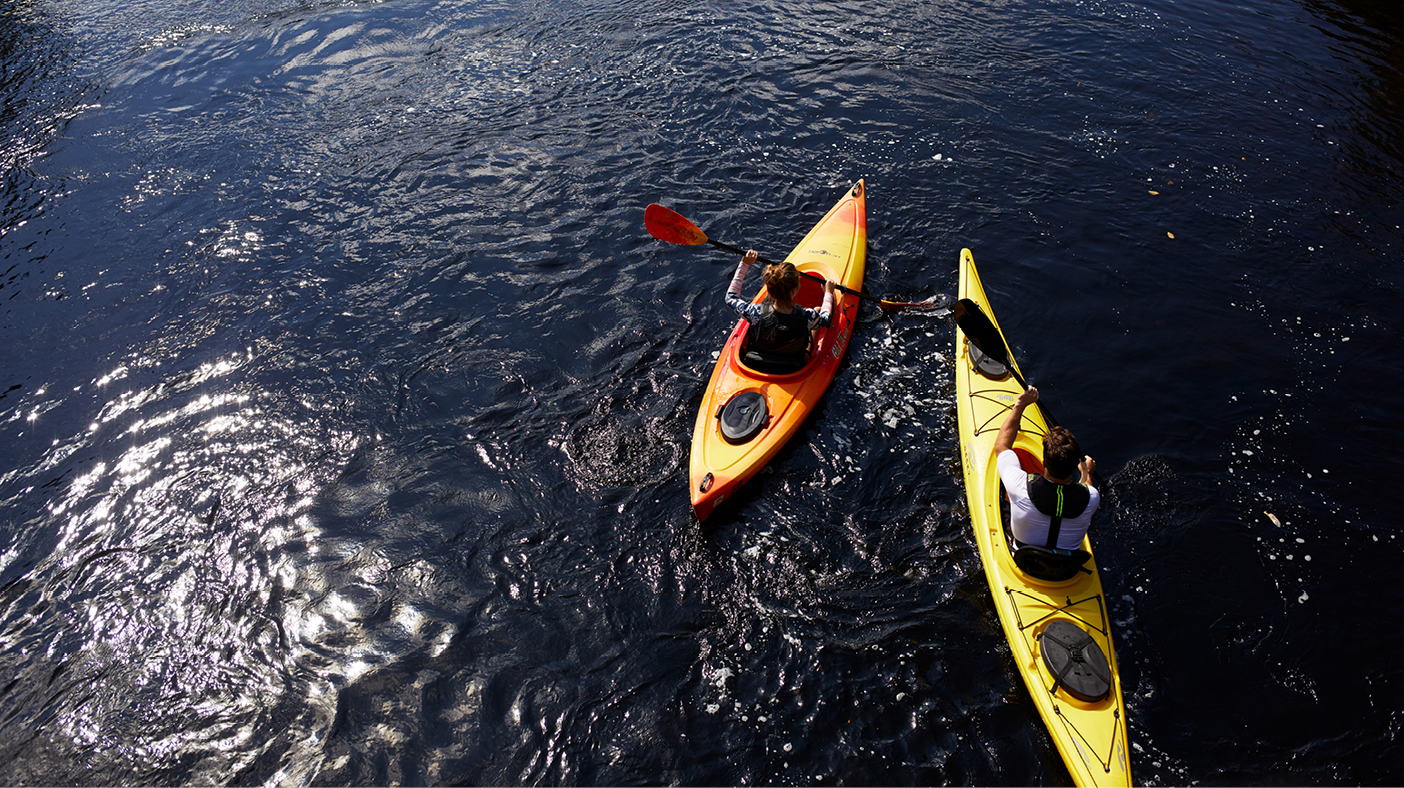How to prevent and treat foot blisters
Outdoor Activities | March 28, 2024
SAIL
August 2, 2022

As temperatures continue to soar, nautical sports are becoming more and more popular at weekends and on vacation. Whether your outing is decided on a spur of the moment or has been organized for a while, navigating while taking care of the planet doesn’t just happen. The good news: it’s achievable if you opt for non-motorized watercraft and adopt best practices while on the water.
This article was produced in collaboration with Earth Day
In this article, you will learn more about:
Do you know what eco-friendly boating is? It aims to redefine nautical sports by using lighter craft without engines, and therefore without generating the kind of pollution linked to fuel combustion. It’s a bit like going back to our roots, seeing as these are the kinds of traditional craft First Nations used, such as canoes and kayaks, which are now adapted to this type of navigation, which is kinder to the planet.
Contrary to noisy motorized boats, which disturb wildlife, these craft are smaller and preserve the fragile balance of our lakes and rivers. And, let’s be honest, they preserve your own peace and balance as well, seeing as an outing is much more pleasant if you’re listening to the birds singing rather than the noise of an engine.
Opting for these non-motorized watercraft also has an unexpected advantage: they give you access to more navigable zones, more and more of which are now banning motorized craft, deemed damaging to natural ecosystems.
Whether you choose paddling, sailing or pedalling, be prepared to slow down and reconnect with nature.
It’s now time to choose the watercraft that’s best suited to your needs amongst the many options available to you.
Kayaks, known for their speed and great manoeuvrability, were designed to silently glide anywhere. These characteristics make them the watercraft of choice for those who want to blend into the background and sneak into narrow areas, without the risk of damaging vegetation or aquatic beds.
Canoes allow you to transport a lot of gear, and were designed to be carried over long distances. They are the most comfortable watercraft, and the most suited to long expeditions. Considering how popular kayaking is within our lands, many models are manufactured locally here in Canada.
Stand up paddleboards are the most compact piece of gear, and they require less balance than you might think. By selecting an inflatable model (read about the other benefits by reading this article), you can carry a paddleboard everywhere without much effort. As for pedal boats, they offer the advantages of being comfortable and easy to maneuver for the entire family, which means all generations can initiate themselves to easier lower-impact nautical sports. You could also be tempted by other craft, such as water bikes or windsurfing boards. In any case, opt for local brands and natural materials to ensure your gear lasts longer.
Whether you use your craft occasionally or frequently, preparation is the key to ensure you take the right steps when jumping into the water. After all, you wouldn’t go hiking without getting to know the trails, right? It’s the same for navigation.
Ask at the visitor reception center which times allow for navigation, and which zones are open or closed, as these can vary according to the season in order to protect the local ecosystems.
You may not realize it, but your craft carries many (small) organisms which can present a real danger for the bodies of water that you enjoy so much. By grabbing on to your craft, these lifeforms colonize the natural areas that you visit, disrupting already fragile ecosystems.
For this reason, cleaning is an important step to take to avoid spreading invading species. Get into the habit of inspecting and washing your entire nautical equipment before and after each time you go on the water, even if you always go back to the same navigation zone. If you are visiting, ask: some parks make cleaning mandatory and provide you with the right equipment to do so.
If you have already been on the water, you know that a gust of wind or a wrong maneuver can make you lose your balance in a flash. For this reason, it’s important to prepare yourself for this eventuality, so that all of your personal effects don’t end up in the water.
Traditional dry bags or airtight barrels don’t just protect your gear; they also prevent the area from being contaminated by your stuff. Opt for reusable containers, heavier and less likely to be blown away by the wind, and which will not generate waste. Tie your gear down tightly and close (all) your pockets before setting sail.
Navigating is often one of those times when you’ll be lucky enough to come face to face with the local biodiversity. On water, as on land, there is one basic rule to follow to protect the local wildlife: keep your distance as you observe it. Even if the magic of the moment compels you to move towards them, stay away from marine mammals so they don’t get used to coming close to boats, which can cause collisions and injuries. Stay quiet as you navigate along natural zones and avoid breeding areas so fish and birds can spawn in peace.
You probably know how to minimize your impact on local wildlife, but you may not be aware of the damage caused to the vegetation, even more so in aquatic environments. Lookout for the surrounding vegetation areas, including those hiding underwater, and stay away so you don’t disturb their balance. Also, ask where you can disembark from your craft and stick to those designated spots, so you don’t stomp all over fragile areas.